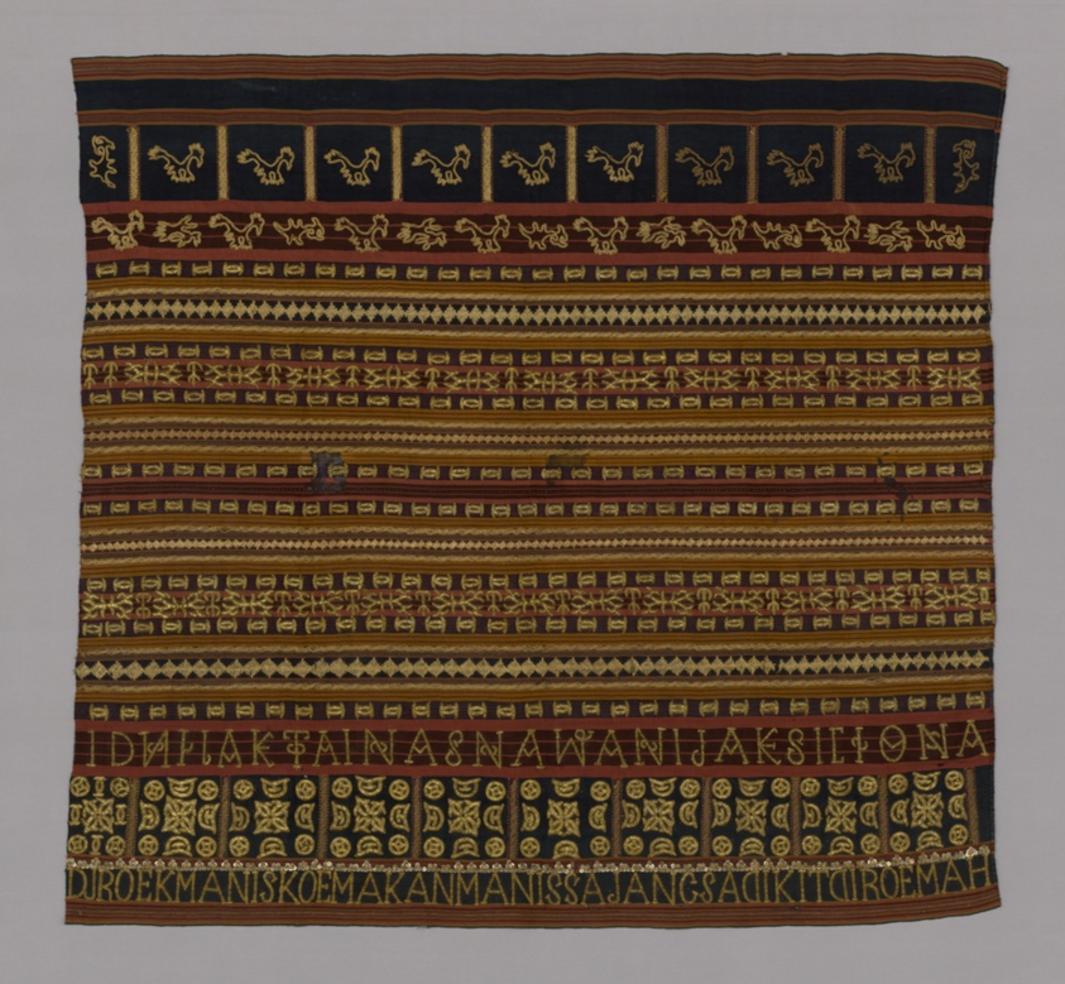Introduction: The Allure of Indonesian Satay
Indonesian satay – those succulent, perfectly charred skewers of marinated chicken – hold a deeply ingrained place in the culinary traditions of Southeast Asia. But their appeal extends far beyond the region, captivating palates worldwide with their complex interplay of smoky, sweet, spicy, and savory flavors. At the heart of this captivating dish lies a masterful balance achieved through a carefully crafted marinade and a distinctive peanut-based satay sauce. The use of ground peanut isn’t merely a textural element; it forms the very essence of the dish, lending a rich, nutty depth that’s simultaneously comforting and invigorating.
Traditionally, satay is a communal experience, a social gathering centered around the rhythmic grilling of skewers and the sharing of stories and laughter. It’s a dish that celebrates freshness, utilizing vibrant ingredients like lime, tomato, and spinach to create a symphony of textures and tastes. The slight char on the chicken – a hallmark of expertly grilled satay – is far more than just a visual cue; it’s a conduit for developing incredibly intense and complex flavors, adding a layer of smoky sweetness that elevates the dish to a truly remarkable level. The sticky, slightly caramelized glaze, a product of the satay sauce, clings to the meat, intensifying the experience with each bite.
Beyond the individual flavors, the popularity of satay also speaks to a desire for authenticity and a connection to global culinary heritage. Charlie Carrington’s The Atlas Cookbook captures this beautifully, offering a pathway to understanding and recreating this iconic dish. The recipe itself – with its meticulous attention to detail – is a testament to the importance of traditional techniques and the profound impact of ingredients. It’s about more than just following a list of instructions; it’s about embracing a culinary tradition and experiencing the joy of sharing a dish that has captivated cultures for generations. The appeal of satay isn’t simply about delicious food; it’s about a shared cultural experience, a moment of connection, and the simple pleasure of savoring something truly exceptional. Exploring different regional variations adds another layer to this fascinating culinary journey, showcasing the incredible diversity within this beloved dish.
Recipe Overview: Combining Flavors for a Festive Dish
These Indonesian Chicken Skewers with Satay Sauce represent a delightful marriage of rich, savory, and subtly sweet flavors, perfect for elevating any gathering or creating a memorable festive meal. The core of the recipe lies in expertly balancing the intensity of the satay sauce with the freshness and brightness of the accompanying tomato salad. Charlie Carrington’s approach, as detailed in The Atlas Cookbook, achieves this through a careful layering of textures and tastes. The dish begins with the deeply savory and slightly spicy satay sauce, built around peanut butter, garlic, and a vibrant red chilli – ingredients that traditionally evoke the exotic aromas of Southeast Asia ‘Southeast Asian Cuisine’. This sauce isn’t merely a glaze; it’s a complex foundation, designed to penetrate and flavor the chicken thoroughly ‘Chicken Recipes’.
However, the richness of the satay sauce needs a counterbalance. That’s precisely where the tomato salad steps in. The inclusion of palm sugar, lime juice, and peanut oil delivers a refreshing acidity and a delicate sweetness that cuts through the heaviness of the satay ‘Palm Sugar Recipes’. The heirloom tomatoes, diced into generous chunks, contribute both sweetness and a juicy texture, adding another layer of complexity. Spinach is folded in for a subtle earthy note that complements the other ingredients. The dish is designed to be both indulgent and invigorating – a harmonious blend that rewards the palate. Ultimately, Carrington’s recipe demonstrates how careful selection of ingredients and thoughtful execution can transform a simple chicken skewer into a truly spectacular and shareable dish, ideal for impressing guests ‘Party Food Recipes’.
The combination of charred chicken coated in the intensely flavored satay, paired with the vibrant tomato salad offers an exciting culinary experience. The contrasting textures – from the tender chicken to the crisp tomatoes and the smooth, creamy peanut sauce – enhance the dining experience. It’s a recipe that celebrates the bold flavors of Indonesian cuisine while remaining accessible and easy to prepare, making it a guaranteed hit at any occasion. To fully appreciate the impact of this recipe, consider serving it with a cooling coconut yogurt dip for an extra element of refreshment ‘Coconut Yogurt Recipes’.
Ingredients: Aromatic Essentials for Authentic Satay
To create the truly exceptional Indonesian Chicken Skewers with Satay Sauce as featured in The Atlas Cookbook by Charlie Carrington, careful selection of ingredients is paramount. It’s not simply about the final flavour; it’s about layering those initial aromas and tastes that define authentic satay. Let’s delve into the components, understanding why each contributes so significantly to the overall experience. High-quality chicken is the absolute foundation. Using bone-in, skin-on chicken thighs provides the best flavour and keeps the meat incredibly moist during cooking. The skin renders fat, intensifying the flavour, and the bone imparts a subtle richness. Don’t skimp on the chicken – this is the star of the show.
Then there’s the peanut butter – and this is where a crucial distinction needs to be made. Creamy, natural peanut butter is essential. Avoid the cheap, overly processed varieties; look for one made with just peanuts and maybe a touch of salt. The oils within a high-quality peanut butter contribute a beautiful toasted nutty aroma and a depth of flavour that’s impossible to replicate. Approximately 130g is needed, but weighing it out accurately ensures consistency in the sauce’s richness.
Next, we have the aromatics, which truly elevate the dish. Garlic is, of course, a cornerstone of Southeast Asian cuisine, but the quality matters. Fresh, firm garlic cloves, crushed rather than minced, release their oils and aromas more effectively. About 5 cloves is a good starting point, but adjust to your preference. Red chilies – specifically, red chilli seeds removed – introduce a vibrant heat that shouldn’t be overpowering. The seeds contain a much higher concentration of capsaicin, the compound responsible for the burn. Using the seeds alone would create a truly intense satay. A single red chilli is usually sufficient, but finely chopped, it adds a beautiful colour and subtle warmth.
Don’t underestimate the importance of white onion – about 1 white onion, chopped. It’s the foundational aromatic base, lending a sweet and savoury depth. Palm sugar – traditionally used in satay, provides a caramel-like sweetness that balances the savoury and spicy elements. It also contributes a distinctive aroma. 30g is a good starting point, but you can adjust to your desired sweetness level. Rice vinegar adds a subtle acidity, further enhancing the balance of flavours. A tablespoon will be enough. Finally, ground coriander – often referred to as ‘kaldu gading’ in Indonesia – is a vital component, providing a citrusy, herbaceous note. About 1 teaspoon adds a complex layer of flavour that’s characteristic of authentic satay. Salt – just a pinch – is crucial for bringing out all the other flavours. Lime juice – a squeeze at the end – adds a bright, fresh finish. These carefully selected ingredients, combined with a generous helping of flavour and attention, will deliver a satay experience worthy of The Atlas Cookbook!
Satay Sauce: Building a Rich and Spicy Foundation
The heart of any truly exceptional Indonesian satay experience lies in the satay sauce – a complex and intensely flavorful concoction that binds all the elements of the dish together. This isn’t simply a dipping sauce; it’s the foundation upon which the entire meal is built. The sauce’s deep, umami-rich taste, achieved through careful layering of spices and aromatic ingredients, is a testament to centuries of culinary tradition. Satay sauce is a testament to this, and mastering its creation is key to replicating a truly authentic experience.
To start, the process begins with a generous helping of grape seed oil, providing a neutral base to build the flavour profile. The addition of five crushed garlic cloves – ensuring they’re thoroughly minced for maximum aromatic release – immediately infuses the oil with a pungent, savory note. This is followed by the careful incorporation of one finely chopped white onion, contributing sweetness and depth. A single red chilli seed (seeds removed, of course!) introduces a controlled level of heat, a characteristic often found in Indonesian cuisine – allowing you to adjust the spice level to your preference.
Next, a teaspoon of sugar – judiciously added – balances the savoury elements, further enhancing the complexity of the flavour. But the real magic happens with the inclusion of 130g of peanut butter. It’s crucial to use a good quality peanut butter – ideally one with just peanuts and maybe a touch of salt – to avoid an overly sweet or artificial taste. The peanut butter provides the core richness and nutty character, and it’s the backbone of the sauce’s distinctive profile.
Finally, the sauce is brought to life with 350ml of water, slowly added while constantly stirring. This gradual introduction of liquid prevents the peanut butter from clumping and ensures a smooth, emulsified texture. The mixture is then simmered over a low heat, allowing the flavours to meld and deepen. It’s important to cook the sauce gently, maintaining a slow simmer, as rushing the process can result in a burnt or overly thick sauce. The onions should soften completely, releasing their full sweetness, and the aromas should become intensely fragrant – a tell-tale sign that the sauce is developing its full potential. The end result should be a rich, glossy sauce that clings beautifully to the chicken skewers, delivering a burst of flavour with every bite. This sauce, properly made, is more than just a component of the dish; it’s the essence of Indonesian satay. Explore different variations of satay sauce to find your favourite!
Tomato Salad: A Refreshing Counterpoint to the Satay
The richness and intense spice of the Indonesian satay sauce, with its peanut butter base and chili kick, demands a refreshing counterpoint. This is precisely what the tomato salad delivers – a vibrant, acidic, and herbaceous balance that cuts through the richness, cleansing the palate and preparing it for another delicious bite. The beauty of this salad lies in its simplicity, allowing the fresh ingredients to shine, while also contributing a crucial textural element. Fresh tomatoes are the star, providing a juicy sweetness that complements the savory satay perfectly. However, the addition of palm sugar isn’t just sweetness; it’s a subtle caramelization that elevates the flavor, transforming the tomatoes into something truly special – a cornerstone element in many Southeast Asian cuisines. This careful balance of sweet and sour is essential for authentic satay dishes.
Beyond the initial sweetness, the lime juice – a critical ingredient – doesn’t simply add tartness; it acts as a natural tenderizer, helping to break down the cell walls of the tomatoes, making them even more succulent. The juice also interacts beautifully with the peanut oil, creating a luscious dressing that coats each piece of tomato. The inclusion of 25 ml of peanut oil adds a layer of nutty flavour, echoing the satay sauce and ensuring a harmonious integration of the components. Experimenting with different heirloom tomatoes will introduce a wider range of flavors and textures, enhancing the complexity of the dish. Different varieties will offer nuanced sweetness, acidity, and even slight variations in their firmness.
Furthermore, the addition of spinach provides an earthy counterpoint to the sweetness and acidity, introducing a subtle bitterness that adds depth. Spinach isn’t just a leafy green; it’s a nutritional powerhouse that adds a boost of vitamins and minerals to the dish. The 100g of spinach contributes a delightful textural element as well, offering a slight crispness that contrasts with the softness of the tomatoes. It’s a clever way to add a nutritional element without compromising the flavour profile. Consider adding a pinch of coriander for an extra layer of freshness – its bright, citrusy notes will amplify the overall vibrancy of the salad. The key is to prepare the salad ingredients separately, ensuring that the vibrant lime dressing is added just before serving to prevent the spinach from wilting and the tomatoes from becoming soggy. This attention to detail is what separates a good salad from an exceptional one, and is a cornerstone of excellent cooking. Finally, the entire salad is presented with a focus on brightness and freshness, capturing the essence of the ingredients and celebrating the beauty of simple, well-executed flavours. This salad’s success rests on quality ingredients and a delicate balance of flavours.
Instructions: Step-by-Step Guide to Perfecting Your Satay
Let’s transform this delicious Indonesian classic into a culinary masterpiece. This step-by-step guide will walk you through each stage, ensuring you achieve that perfect balance of rich, spicy, and flavorful satay. Preparation is key, and with a little patience, you’ll be enjoying these skewers in no time.
Step 1: Crafting the Satay Sauce – The Heart of the Dish
Begin by preparing the satay sauce, the very foundation of this flavorful experience. In a food processor, combine the crushed roasted peanuts – approximately 100g – with 350ml of water. The initial blitz should create a slightly thick paste. This creates a smooth base for our satay. Next, add the 50ml of grape seed oil, followed by the 5 crushed garlic cloves. Pulse again to incorporate the aromatics fully. Then, introduce the chopped white onion (around 1 medium onion, roughly chopped) and the seeded red chili (1 red chili, deseeded and finely chopped – adjust the quantity based on your desired spice level!). Now, stir in the 1 teaspoon of sugar – this balances the savory notes. Finally, add the 130g of peanut butter. Process everything together until you achieve a smooth, emulsified sauce. It’s important not to over-process, as you want to maintain a slight texture. Once the sauce is ready, transfer it to a large frying pan. Slowly cook over a low heat, stirring constantly, for approximately 10-15 minutes. The key here is patience – allowing the flavors to meld and deepen. You can also gently simmer the sauce on the hob over a low heat.
Step 2: Building the Tomato Salad – A Burst of Freshness
While the satay sauce is gently simmering, let’s turn our attention to the tomato salad, which offers a vibrant counterpoint to the richness of the satay. In a small saucepan, heat 30ml of water over medium heat. Add the 10g of palm sugar and whisk continuously until it completely dissolves. This creates a simple syrup that will infuse sweetness into the dressing. Remove the saucepan from the heat and immediately whisk in the juice of 2 limes – this provides the crucial acidity that brightens the flavors. Finally, incorporate 25ml of peanut oil and whisk again until everything is thoroughly combined. Set the dressing aside. This step can be done in advance to allow the flavors to meld.
Step 3: Assembling and Cooking the Skewers
Now, it’s time for the main event! Prepare the chicken thighs. Dice 6 chicken thighs, skin-on, into approximately 2-3cm cubes. Thread the chicken cubes onto skewers, leaving a small space between each piece. Carefully pour the prepared satay sauce over the skewers, ensuring they’re thoroughly coated. Place the skewers on a baking sheet lined with parchment paper. Cook in a preheated oven at 180°C (350°F) for 15-20 minutes, turning the skewers halfway through, until the chicken is cooked through and slightly caramelized. Alternatively, you can grill the skewers over medium heat for 10-12 minutes, turning frequently to ensure even cooking and prevent burning. Maintain a close eye on the skewers during the final stages of cooking to prevent overcooking and ensure they retain their moisture.
Step 4: Finishing Touches
Once the skewers are cooked, transfer them to a serving platter. Drizzle generously with the prepared tomato salad. For an extra touch of elegance and flavor, garnish with fresh cilantro or chopped scallions (optional). Serve immediately and enjoy the culmination of your culinary efforts – a truly authentic Indonesian satay experience! For serving, consider accompanying the skewers with rice and naan bread, allowing you to soak up every last drop of the delicious satay sauce. Explore traditional Indonesian side dishes for a truly immersive experience.
Cooking Techniques: Barbecuing or Roasting for Optimal Results
Achieving the perfect Indonesian Chicken Satay hinges not just on the ingredients, but also on the cooking technique – whether you opt for the smoky char of a barbecue or the even heat of an oven. Both methods yield delicious results, but understanding their nuances will elevate your satay to a truly authentic experience.
Barbecuing for a Deep, Smoky Flavor: Barbecuing is the traditional method and delivers a distinctive, deeply smoky flavour profile that’s essential to the satay experience. The high heat of the barbecue creates beautiful caramelization on the chicken, locking in juices and providing a satisfyingly charred exterior. However, it requires careful attention. Because of the intense heat, the skewers cook incredibly quickly – typically around 8 minutes over high heat. Constant monitoring is crucial to prevent burning. You’ll need to rotate the skewers frequently, ensuring all sides receive equal attention. A slightly lower heat setting might be necessary toward the end to ensure the chicken is cooked through without sacrificing the crispness of the exterior. Furthermore, the smoke from the barbecue adds a complexity of flavour that’s difficult to replicate in a conventional oven – a characteristic many home cooks actively seek when recreating this classic dish. To ensure optimal results, consider using hardwoods like apple or cherry wood for their subtle sweetness, further enhancing the flavour of the satay. Wood for Barbecuing Choosing the right wood
Roasting for Even Heat and Consistent Results: If you lack a barbecue or prefer a more controlled cooking environment, roasting provides an equally rewarding outcome. Preheat your oven to 200°C (180°C fan/Gas Mark 6). This temperature ensures the chicken cooks evenly, preventing the exterior from burning while maintaining a juicy interior. Roasting typically takes around 12 minutes, allowing sufficient time for the chicken to cook through thoroughly. The key difference is the slower, more gradual heat transfer. This method is ideal for those who are less experienced with grilling, as it minimizes the risk of overcooking. It’s particularly beneficial for thicker chicken thighs, ensuring they remain tender and succulent. While roasting doesn’t deliver the same smoky flavour as barbecuing, you can mitigate this by using a little smoked paprika in your satay sauce – just a pinch – to impart a hint of smokiness. Smoked Paprika Using Paprika in Satay A guide on paprika
Regardless of your chosen method, remember that a meat thermometer is your best friend! Aim for an internal temperature of 74°C (165°F) for optimal doneness. Meat Thermometers For both barbecuing and roasting, a light brushing of satay sauce during the last few minutes of cooking will ensure the skewers are beautifully glazed and remain incredibly moist. Satay Sauce Recipes
Plating and Serving: Presentation for a Memorable Meal
Elevating a dish isn’t just about the taste; it’s about the entire experience, and when it comes to Indonesian Chicken Skewers with Satay Sauce and Tomato Salad, the presentation truly sets it apart. Creating a visually stunning plate enhances the anticipation and adds to the feeling of indulgence. Consider the color palette – the rich, dark brown of the grilled skewers, juxtaposed with the vibrant red of the heirloom tomatoes and the glossy green of the spinach, creates a highly appealing contrast. Visual appeal is key, and a thoughtfully arranged plate reflects the care and attention invested in the recipe.
Start with a generous base of the tomato salad. Don’t just pile it high; instead, create a flowing bed of diced heirloom tomatoes, interspersed with the delicate leaves of spinach. Drizzle generously with the freshly prepared lime and peanut dressing – the sheen of the oil and the bright color will immediately draw the eye. The dressing should be applied with intention, creating ribbons and pools to highlight the freshness of the ingredients. Freshness and color are vital to the presentation.
Carefully arrange the hot chicken skewers across the tomato salad, ensuring they are not overcrowded. Allow each skewer to stand out, showcasing the perfectly grilled exterior. The slight char marks are a testament to the cooking process and add to the rustic, authentic appeal. You can gently rotate the skewers as you place them, creating a dynamic and visually interesting composition. Dynamic Composition is essential.
Finally, the finishing touch: a generous sprinkle of crushed roasted peanuts. Don’t simply scatter them haphazardly; instead, use a spoon to create small mounds, adding textural contrast and a pop of color. These crunchy additions are not only delicious but also visually stimulating. A small swirl of extra satay sauce can be drizzled artfully around the plate, further enhancing the presentation. Texture and Contrast is key for an impressive visual.
For a more formal presentation, consider serving the skewers on a slate or wooden board, which adds to the rustic charm of the dish. Alternatively, individual plates can be used, ensuring that each serving is as visually appealing as the last. Remember, the goal is to create a plate that is both delicious and a work of art – a reflection of the wonderful flavors of Indonesia. Plate Choice impacts the overall appearance.
Notes: Sourcing and Further Exploration of The Atlas Cookbook
The Indonesian Chicken Skewers with Satay Sauce recipe, as presented here, is a carefully curated extract from Charlie Carrington’s acclaimed The Atlas Cookbook (Hardie Grant Books, $39.99), a publication celebrated for its adventurous and globally-inspired recipes. Carrington’s approach to cooking is deeply rooted in his extensive travels and culinary explorations, resulting in dishes that are both authentic and accessible. Acquiring the full The Atlas Cookbook unlocks a truly remarkable culinary journey, offering over 150 recipes spanning diverse cultures and ingredients – from Moroccan tagines to Peruvian ceviche. The Atlas Cookbook is more than just a collection of recipes; it’s a testament to Carrington’s belief that food can be a powerful bridge between cultures and a delightful way to expand your palate.
Beyond this specific recipe, Carrington’s broader philosophy is evident throughout the book. He emphasizes using high-quality, fresh ingredients and mastering foundational techniques. He particularly highlights the importance of building flavor layers, a principle beautifully demonstrated in this satay recipe, where the rich, complex satay sauce is balanced by the bright, herbaceous tomato salad. Carrington’s approach encourages readers to actively engage with their cooking, fostering a deep appreciation for the art of flavor development. You can discover more about Charlie Carrington and his culinary adventures on his official website Charlie Carrington’s Website.
Furthermore, Carrington’s work is closely linked to Cazbah Media, the company responsible for publishing The Atlas Cookbook and creating the accompanying magazines. Their focus on allergy-friendly recipes and accessible cooking techniques aligns perfectly with the spirit of this recipe and the broader mission of The Atlas Cookbook. Their subscription magazine, AGFL, offers over 50 allergy-friendly recipes in every issue, plus expert advice, tips and more Subscribe to AGFL Magazine.
For those seeking further inspiration or delving deeper into Southeast Asian cuisine, we recommend exploring the wealth of resources available online and in libraries. Websites such as Serious Eats – Southeast Asian Recipes and The Spruce Eats – Indonesian Recipes provide excellent starting points, though it’s worth noting that regional variations on satay recipes exist across Indonesia and Malaysia. Understanding the nuances of regional spices and techniques will undoubtedly elevate your own satay creations. Finally, consider visiting ethnic markets – particularly those specializing in Asian ingredients – to source authentic spices and ingredients like smoked chilies, galangal, and kaffir lime leaves, which are key to capturing the true flavor of this dish. Learning to identify and utilize these ingredients will significantly enhance your culinary experience and allow you to experiment with variations on this classic recipe. Explore Indonesian Ingredients.
 ,
,:max_bytes(150000):strip_icc()/1672873-b1515bb45bc9461aab0353af1c1114bc.jpg) ,
, ,
, ,
, ,
,
